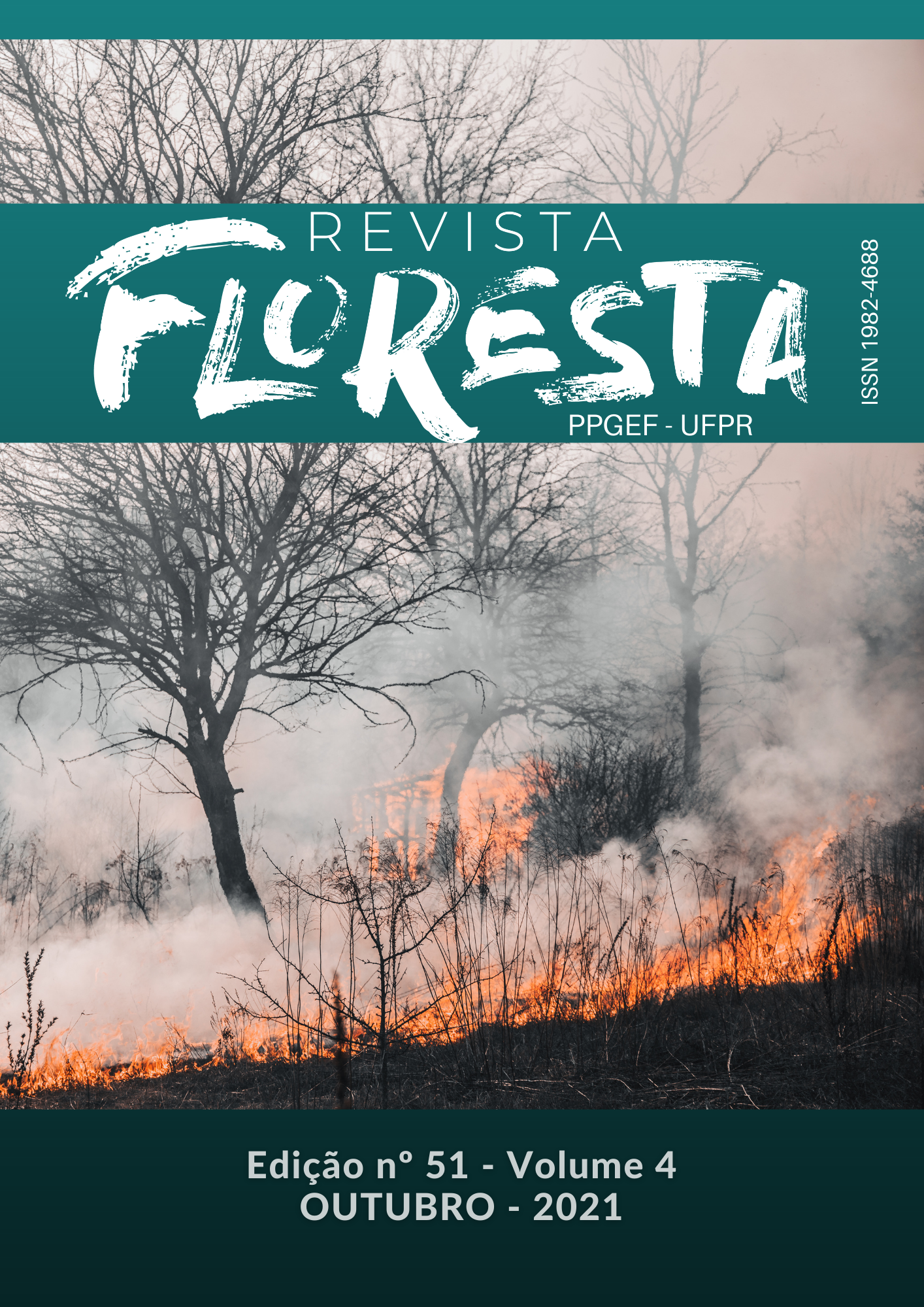EFFECT OF CLIMATE CHANGE ON THE DEMOGRAPHICS OF CURITIBA PRISMATICA (D. LEGRAND) SALYWON & LANDRUM: AN ENDEMIC ARAUCARIA FOREST SPECIES
DOI:
https://doi.org/10.5380/rf.v51i4.74685Palavras-chave:
suitability, conservation, forest management, MyrtaceaeResumo
With the occurrence of intensive climate change, there is a risk of irreversible damage to global biodiversity, resulting in reduction of geographical distribution and species extinction. The objective of this study was to evaluate the current distribution and the future projection of the areas of occurrence of Curitiba prismatica. Current occurrence data accessed in the SpeciesLink database and scientific studies were collected, which were correlated with the bioclimatic data available in WorldClim, for the current and future periods (2070), in the optimistic (RCP 4.5) and pessimistic scenarios (RCP 8.5) of the HadGEM2-ES model. In the current scenario, a species presents suitability restricted to mixed ombrophilous forest (MOF), with limited distribution to the center-south of the state of Paraná and the north of the state of Santa Catarina. For the future, there were reductions in the areas of climatic susceptibility for the species, both in the optimistic and pessimistic scenarios. In the RCP 4.5 scenario, the predictive reduction was found in the midwest region of Paraná, unlike the RCP 8.5 scenario, which showed a low reduction in this region. Therefore, in the future, areas with high suitability will tend to contract, but restricted to the regions of the first and second plateau of Paraná and the north of Santa Catarina. In this sense, these areas are indicated for commercial planting and in situ and ex situ conservation of the species.
Downloads
Publicado
Como Citar
Edição
Seção
Licença
Direitos Autorais para artigos publicados nesta revista são do autor, com direitos de primeira publicação para a revista. Em virtude da aparecerem nesta revista de acesso público, os artigos são de uso gratuito, com atribuições próprias, em aplicações educacionais e não-comerciais.A revista, seguindo a recomendações do movimento Acesso Aberto, proporciona acesso publico a todo o seu conteudo, seguindo o principio de que tornar gratuito o acesso a pesquisas gera um maior intrcambio global de conhecimento.
Conteúdos do periódico licenciados sob uma CC BY-NC-SA 4.0



